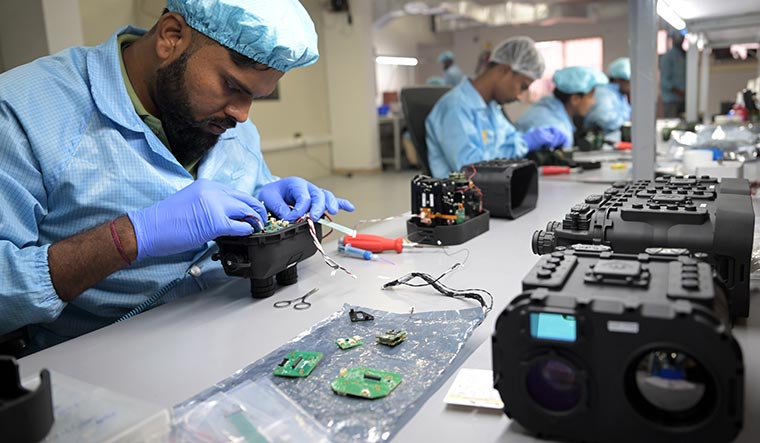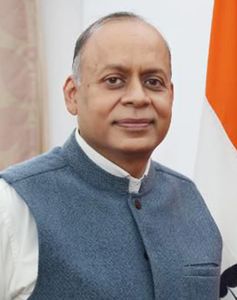Kumar is former defence secretary, distinguished visiting professor, IIT Kanpur, and founder chairman, Mounttech Growth Fund
India has the world’s third largest startup ecosystem, but arguably the world’s largest defence startup ecosystem. This amazing transformation happened in the last five to six years. In February 2018, the ministry of defence introduced a draft defence production policy with ambitious goals―triple defence industry turnover to Rs1.75 lakh crore and increase defence exports nearly 15-fold to Rs25,000 crore by 2025. It is in this policy that startups were envisioned to foster an innovation ecosystem.
Very few believed that startups could significantly impact defence needs. Innovation for Defence Excellence (iDEX) was launched in April 2018 by Prime Minister Narendra Modi, marking a significant policy initiative. It established open startup challenges, later termed Defence India Startup Challenges (DISC), aligned with the requirements of the Indian armed forces. Startups were invited to offer solutions and the most promising ones received financial support of up to Rs1.5 crore, contingent on achieving milestones and matched or higher investment from the startups.
Around this time, an unexpected request arrived at the defence ministry from the US embassy―they sought collaboration with an Indian startup specialising in military swarms, a technology they found unique and compelling. This surprised the ministry, accustomed to being the seeker rather than the sought-after, especially with respect to the US. As secretary, defence production, I delved deeper into the matter, consulting with ministry officials and armed forces officers who were equally unaware of this startup and its groundbreaking innovations. My curiosity led me to the founder, who was a retired Indian Air Force officer. He revealed his futile attempts to engage with the ministry and the IAF. Meeting him was enlightening―it reinforced my belief in the potential of startups and their inventive teams to drive India's defence innovation ambitions forward.
The results were beyond even the most optimistic estimates. The startups provided technological solutions that were previously only available through imports, with no prior prospects of domestic development for years. In one of the early challenges of DISC-1, startups were asked to develop a high-resolution, 100-megapixel camera for airborne platforms and missiles. Few countries possessed the capability to create such advanced camera sensors. A startup from IIT-Delhi took on the challenge, mastering the complex chip-design. Within 12 months, they successfully delivered the sensor to general astonishment. Pushing further, they proposed developing a groundbreaking 1-gigapixel camera. Today, this startup collaborates with NASA and Lockheed Martin demonstrating their high competence. An incredible journey indeed!
Startups revolutionised defence innovation with unprecedented speed, scale and cost-effectiveness. Previously, defence R&D projects spanned years or decades, costing hundreds to tens of thousands of crores. Some iDEX startups delivered innovations in just 12 to 18 months, often with grants as low as Rs1.5 crore.
Startups came forward in hordes, partly driven by the thrill of solving military challenges and partly by a sense of national duty, enabling the armed forces to address a multitude of issues simultaneously. In August 2022, a whopping 75 challenges were introduced for underwater technologies, followed by another 75 in October 2022 for space-based technologies. These fields were new terrain for startups, yet the challenges attracted a significant number of participants.
Within a year, prototypes were developed in response to the naval challenges and showcased by the Indian Navy in September 2023. The scale and speed of the startup defence innovation ecosystem was so remarkable that it seemed surreal!
Defence startups have proven their solutions to be on par with, if not superior to, the best. A winner of an iDEX challenge in quantum communication achieved quantum key distribution over 150km on fibre, when the best achieved in the world was 90 km. This breakthrough not only made their solution nearly 60 per cent cheaper but also significantly more efficient. Recognised among the world's top quantum communication companies, this startup attracted interest from global giants like Google and Amazon for integrating their technology into cloud platforms. Following the US government's move to adopt post-quantum cryptography solutions, this startup developed a compatible solution and started offering it in the US.
Several startups stemming from iDEX have already entered international markets or are poised to do so. The surge of defence innovation by Indian startups has been so impactful that the US department of defence collaborated with India for joint challenges. Within a year, two rounds of these collaborative challenges have already been initiated. Indian defence startups are now competing alongside their US counterparts, advancing cutting-edge technologies outlined in these challenges.
The remarkable success can be partly attributed to India's substantial talent and capabilities in digital technologies. But, iDEX’s success is also because of the proactive policy support provided by the government. Major policy decisions like earmarking of 75 per cent of capital acquisition budget for domestic industry and positive indigenisation lists, which banned import of hundreds of platforms and thousands of sub-systems and components, increased the demand for startup-developed products.
Breaking from past norms where the government typically claimed ownership of intellectual property from public-funded research, iDEX allows startups to retain their IP, encouraging them to explore opportunities in civil and export markets.
Given that defence startups operate in a monopsonistic environment―the armed forces being the sole buyers―they needed a procurement mechanism to sell their innovations. The government introduced the Make-2 route within the defence acquisition process to facilitate this. The armed forces' adoption of spiral development and their active hand-holding of startups throughout the developmental cycle have significantly bolstered innovation.
While iDEX provides partial funding to startups, they need to secure the rest from other sources. Efforts were made to encourage venture capitalists to support defence startups at DefExpo 2022 in Gandhinagar. But, few VCs stepped forward.
To address this shortfall, the Mounttech Growth Fund was established. VC has been instrumental in driving innovation globally. If the Mounttech Growth Fund can inspire other VCs to invest in technology and IP creation, it could mark a pivotal moment in India's evolution into a product nation and a developed economy.



